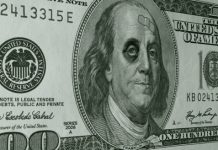Investors got the policy pivot they were looking for this week; unfortunately, not from the Federal Reserve (Fed), but from the Bank of England (BoE) instead.
In an extended market reaction to Wednesday’s Fed decision, the US dollar gained across the board, as investors repositioned for a more aggressive Fed tightening.
The Fed will not stop until it pushes rates above 5%, at least. I say at least, because it will depend on how fast the rate hikes translate into lower inflation, and lower jobs.
Released Wednesday, the ADP report exceeded analysts’ expectations with 239’000 new private job additions last month.
Due today, the NFP is expected to reveal 200’000 new nonfarm jobs in October, for an average hourly pay rise steady around 0.3%.
A stronger than expected jobs, or wages data could only further boost the Fed hawks, whereas today’s jobs figures should be particularly soft to throw cold water on very hot hawkish Fed expectations before the weekly closing bell.
The S&P500 lost another 1% yesterday, and more than 5% since the peak of this week. The latest bear market rally is now leaving its place to another dive, and we could see the index sink toward 3400 in the continuation of an ABCD pattern building since March this year.
Nasdaq dived another 2% and is poised to extend gains toward the 10200 level in the continuation of the latest selloff wave.
Only ugly US data could relieve others’ pain
Unfortunately, the only thing that could reverse the morose investor sentiment would be dramatically ugly jobs, and economic data from the US.
That’s also the only thing that could save the rest of the world from the worsening Fed aggression: rapidly deteriorating economic conditions in the US.
As long as the US economy remains resilient, the Fed will continue exporting its pain, and inflation to the rest of the world through a too-strong US dollar.
So, Americans would excuse the rest of the world for praying to see ugly jobs figures from the US, today.
What is BoE trying to do?
The Bank of England (BoE) raised its interest rate by 75bp yesterday, but announced that the city analysts have got the BoE’s terminal rate wrong, and that the future rate hikes from the BoE will be softer, given that the economic situation is alarming.
So why to hike by 75bp in the first place?
To avoid sterling from crumbling?
But sterling dived anyway, and will dive deeper. Cable, which began the week above the 1.16 mark dived all the way down to 1.1150 after the BoE statement, and the divergence between the Fed – looking for smaller rate hikes but toward a higher end rate, and the BoE, which threw a useless 75bp hike, and doesn’t want to get more aggressive than this, will likely weigh on the pound-dollar in the medium run. We could again see the pair testing parity in the coming weeks.
Good news, however, is, the short end of the British gilt curve eased on expectation of a lower end rate from the BoE. The 2-year yield tipped a toe below 3% yesterday, the 10-year yield remained below the 3.5% level. What BoE is trying to do is to get some pressure off the mortgage rates, and the housing market, even if it means higher inflation than otherwise, for longer.
It looks like the BoE also relies on a reasonably restrictive fiscal budget from the new Sunak government.












